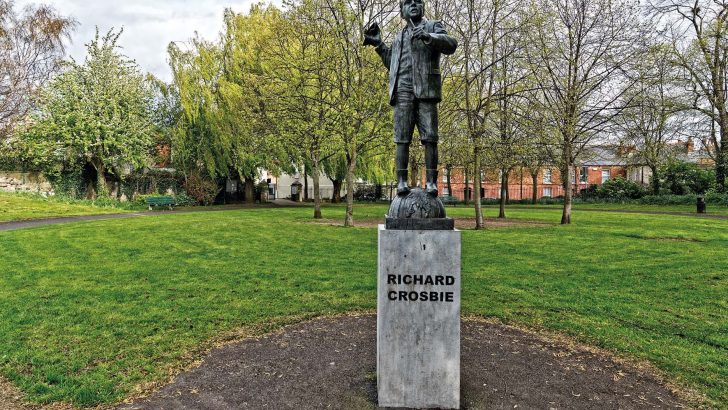The Crosbies of Cork, Kerry, Laois and Leinster by Michael Christopher Keane (Beechgrove, Ovens; ISBN: 9781527297418; €20.00/£18.00)
The author, Michael Christopher Keane, is a practised hand at research and writing, having already written extensively about the Crosbie family.
In From Laois to Kerry (2016) he recorded the life and times of Patrick Crosbie (c. 1550-1610) and his brother John, Protestant bishop of Ardfert, as well as the transplantation by the Crosbies of the Seven Septs of the O’Moore county to North Kerry. In this tranche of family history he provides comprehensive profiles of a variety of other members of the family this very extended and convoluted family.
Mention of the Crosbies brings to mind the Cork Examiner (now The Irish Examiner) with which the family was associated for so many years. The newspaper was founded in 1841 (much earlier than The Irish Times or the Irish Independent) by John Francis Maguire, MP, a constitutional nationalist.
Writer
Fifteen-year-old James Crosbie joined the paper’s staff in the following year. He was a skilful writer and enterprising newspaperman and was soon in the editor’s chair. Having launched the Evening Echo in 1892 and the Cork Weekly Examiner in 1896, he died in 1899 leaving a thriving newspaper-business to his son George.
George’s stewardship coincided with a period of intensive socio-political change. The initial response of the Cork Examiner to the Easter Rising was disbelief, based on limited and faulty information. Subsequently, however, the editor cautioned the authorities not to adopt harsh measures against the rebels.
He was impartial in condemning the violence perpetrated by both sides in the War of Independence. The paper backed the Anglo-Irish Treaty and the Free State and was aghast at the death of Michael Collins. The Crosbies remained at the helm of the Cork Examiner until it was sold to The Irish Times Ltd in October 2019.
Some lesser-known members of the Crosbies settled in counties Carlow and Wicklow. In 1798 Sir Edward Crosbie was resident in Viemont House, outside Carlow Town. In May of that year 1,200 rebels rallied on his lawn before attacking the town. The rebels were defeated and in the subsequent round-up Edward Crosbie, even though he had refused to accompany or aid the rebels, was court-martialled and hanged.
The famous balloonist Richard Crosbie (1756-1800) was a member of the Wicklow branch of the family. While in the army he developed an interest in hot-air and hydrogen balloons and announced his intention to fly across the Irish Sea in one. The hot air and the gas balloon were invented in 1783 in France, and the notion of manned flight was sweeping the world.
Balloons
Initially Crosbie sent up animals in balloons. Then in January 1785 from the Ranelagh gardens in Dublin (now a public park), he successfully ascended in a hydrogen gas balloon in front of more than 30,000 people to land safely at Clontarf. When Crosbie did attempt to fly across the Irish Sea he was safely rescued when he came down in mid-channel.
(A curious monument of a small boy with a windmill now stands in the park to commemorate this achievement of the first Irishman rising to new heights, as the locals say.)
Among the other profiles is that of the unsung but genuine patriot Lindsay Talbot Crosbie. He took over Ardfert Abbey in 1899 and soon developed a reputation as a reconciler between the strong opposing factions in the country at that time. He is best remembered for his role in initiating the movement that led to the Wyndham Act of 1903 which enabled tenants to purchase their land and thereby fundamentally changed the fabric of Irish society. He was also an active member of the Irish Volunteers; campaigned for Irish self-government and to that end set up the Irish Reform Association.
Michael Christopher Keane is a master-storyteller. His stories are the products of meticulous research and he is ever most generous in acknowledging the contribution of other chroniclers to ensuring their accuracy.


 Richard Crosbie statue Ranelagh Gardens (Dublin). Photo: William Murphy.
Richard Crosbie statue Ranelagh Gardens (Dublin). Photo: William Murphy. 